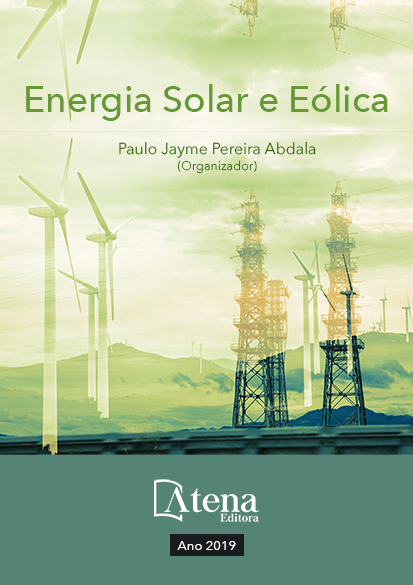
AVALIAÇÃO DE DESEMPENHO DE NOVO PROTÓTIPO DE FOTOBIORREATOR NÃO TRANSPARENTE PARA CULTIVO DE MICROALGAS COM ILUMINAÇÃO INTERNA ATRAVÉS DE POFs QUE RECEBEM A LUZ DE LENTES MONTADAS EM SISTEMA DE RASTREAMENTO SOLAR
A elevada produtividade de óleo/
hectare-ano das microalgas, conforme descrito
na literatura, motivou nos pesquisadores a nível
mundial o interesse de estudá-las como matéria
prima na produção de biodiesel. No entanto,
o elevado custo de produção e manutenção
dos sistemas fechados de cultivo em larga
escala (tipo “Fotobiorreator”) e os problemas
de contaminação e conseqüente menor
produtividade dos sistemas abertos (tipo “Lagoas
abertas”) tornaram-se limitantes importantes
na avaliação da sustentabilidade de produzir
biodiesel a partir de microalgas. Focados no
desenvolvimento de tecnologias que viabilizem
o cultivo de microalgas e o aproveitamento
e valorização de produtos, subprodutos e
resíduos desta indústria utilizando o conceito
de biorrefinaria, neste trabalho avaliou-se o
desempenho de um sistema de cultivo montado
nas dependências do Laboratório de Tecnologias
Verdes - GreenTec/EQ/UFRJ. O protótipo está
formado por fotobiorreator não transparente
com iluminação interna através de um feixe de
fibras ópticas plásticas (POFs) que recebem a
luz solar de lentes montadas em um sistema de
rastreamento solar. Este estudo foi realizado
de forma comparativa, avaliando em paralelo o
crescimento celular da espécie Monoraphidium
sp. no sistema de cultivo tradicional formado por
fotobiorreator transparente tipo Janela. Após o
cultivo verificou-se a produção de biomassa
de microalgas em ambos os sistemas, através
das análises de contagem de células e peso
seco. Seguidamente, avaliou-se o potencial da
biomassa microalgal produzida para a produção
de biocombustíveis a partir da quantificação do
teor de lipídios convertíveis em biodiesel - LCB.
AVALIAÇÃO DE DESEMPENHO DE NOVO PROTÓTIPO DE FOTOBIORREATOR NÃO TRANSPARENTE PARA CULTIVO DE MICROALGAS COM ILUMINAÇÃO INTERNA ATRAVÉS DE POFs QUE RECEBEM A LUZ DE LENTES MONTADAS EM SISTEMA DE RASTREAMENTO SOLAR
-
DOI: 10.22533/at.ed.66719220114
-
Palavras-chave: Fibras Óticas Plásticas, Rastreamento Solar, Microalgas
-
Keywords: Plastic Optical Fibers, Solar Tracking, Microalgae
-
Abstract:
The high oil yield/hectare-year
of microalgae, as described in the literature,
motivated researchers worldwide to study
them as raw material in biodiesel production.
However, the high cost of production and
maintenance of closed systems of cultivation
on a large scale (“photobioreactor” type) and
the problems of contamination and consequent
lower productivity of open systems (“open
Energia Solar e Eólica Capítulo 14 213
ponds” type) have become important limitations in the evaluation of the sustainability
of producing biodiesel from microalgae. Focused on the development of technologies
that enable the cultivation of microalgae and the use and valorization of products, byproducts
and waste from this industry using the concept of biorefinery, in this work the
performance of a cultivation system mounted on the premises of the Green Technologies
Laboratory - GreenTec/EQ/UFRJ was evaluated. The prototype this formed by nontransparent
photobioreactor with internal illumination through a beam of plastic optical
fibers (POFs) that receive sunlight from lenses mounted in a solar tracking system.
This study was carried out in a comparative way, evaluating in parallel the cellular
growth of the species Monoraphidium sp. in the traditional culture system formed
by a transparent window type photobioreactor. After was verified the production of
microalgae biomass in both systems, through cell count and dry weight analyzes. Next,
we assessed the potential of the microalgal biomass produced for biofuel production
from the quantification of the lipid content convertible into biodiesel – LCB.
-
Número de páginas: 15
- Gisel Chenard Díaz


